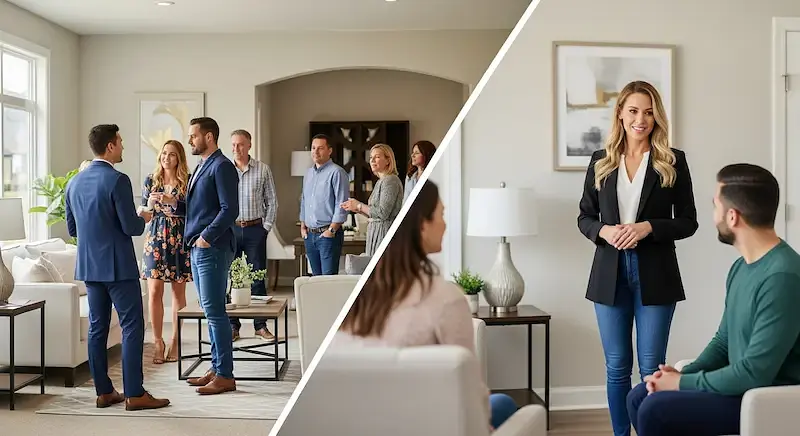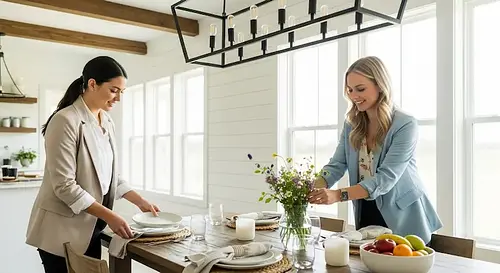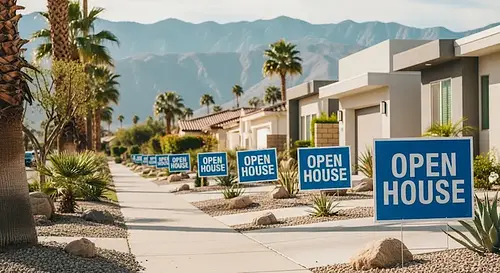Open House Vs Private Showing: Pros, Cons, And When To Use Each
Open houses and private showings serve different purposes in the home buying journey—but which one is right for your situation? In this guide, we break down the pros, cons, and best use cases for each, along with expert tips to help buyers and sellers make the most of every showing.

Written by Seth Cox
Jul 18, 2025 / Open house marketing
Open houses are about casting a wide net. Private showings are about meaningful one-on-one time. Knowing the difference (and when to use each) can help you market a home more effectively—or find the one that truly fits.
In this article, we’ll walk through the pros and cons of each, explore when they work best, and explain how combining both strategies can give buyers and sellers an edge.
What Is an Open House?
Open houses are designed to generate buzz, create foot traffic, and give curious buyers (and sometimes curious neighbors) a chance to explore the space in a no-pressure setting.
- Typically held on weekends for 1–3 hours
- Open to the general public—no appointment necessary
- Hosted by the listing agent or a team member
- Used to generate early interest and gather feedback
- Appeals most to casual or early-stage buyers
What Is a Private Showing?
Private showings are typically arranged after a buyer has seen the listing online and wants a closer look before making an offer.
- Scheduled in advance between buyer, seller, and their agents
- Offers privacy and focused time in the home
- Ideal for serious or pre-approved buyers
- Allows for in-depth questions and slower pace
- Can happen at any time, not just on weekends
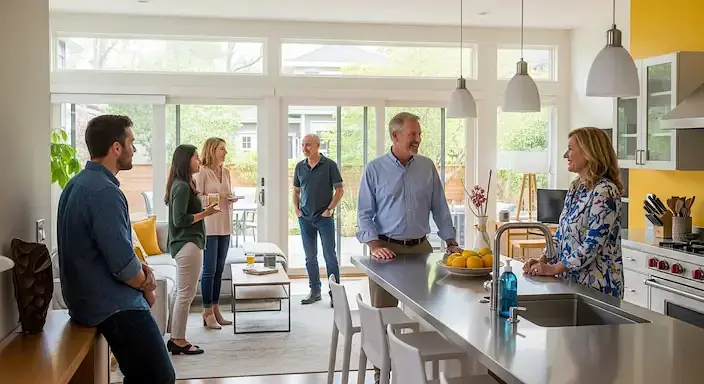
Pros and Cons of Open Houses
Related: How Many Open Houses Should You Have?
Benefits of Open Houses
- Increased exposure: Open houses don’t just attract serious buyers—they also bring in drive-by traffic, curious neighbors, and passersby who may mention the home to friends or family. This ripple effect can increase visibility beyond the usual listing channels.
- Low-pressure environment: Without a scheduled appointment or an agent hovering at their side, buyers feel free to wander, visualize themselves in the space, and absorb the home at their own pace. That kind of freedom can spark emotional connections.
- Efficiency for sellers: Instead of keeping the home spotless day after day for staggered showings, sellers can focus their prep on a single event. This saves time, energy, and stress—especially in occupied homes.
- Word-of-mouth potential: A neighbor might not be in the market, but their coworker might be. Open houses often lead to unexpected referrals that wouldn’t have happened through private showings alone.
- Immediate feedback: With multiple visitors flowing through, agents can quickly gauge how the market is responding—whether it’s price, layout, or condition—and adjust their strategy as needed.
Drawbacks of Open Houses
- Lack of control: It’s harder to tailor the experience to individual buyers
- Disruption to daily life: Sellers need to clean, vacate, and stay flexible
- Limited buyer focus: Serious buyers may be distracted by the crowd
- Artificial urgency: Seeing others tour the home can cause rushed decisions
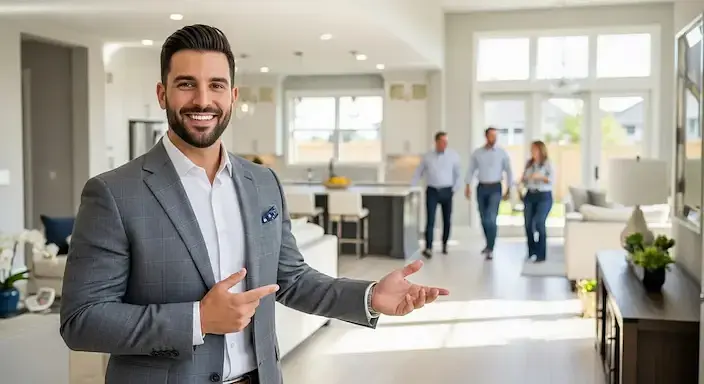
Pros and Cons of Private Showings
Benefits of Private Showings
- Targeted attention: Buyers can ask specific questions, point out their preferences, and receive tailored insights from the agent—whether it’s about recent upgrades, comps in the area, or renovation potential.
- In-depth exploration: From checking closet space to running the water pressure or opening cabinets, private showings allow buyers to fully assess the functionality and condition of the home without the eyes of a crowd.
- Personal pace: There’s no rush. Buyers can spend time in the kitchen picturing a family meal, or linger on the back patio visualizing weekend mornings. That extra time often leads to stronger emotional buy-in.
- Privacy for discussion: In a private setting, buyers can speak openly with their agent—comparing the home to others they’ve seen, discussing budget, or weighing pros and cons without worrying about being overheard.
- Ideal for luxury or unique homes: High-end properties, custom builds, or homes with unusual layouts often need a walkthrough that tells a story. A private showing gives the agent the chance to guide buyers thoughtfully through the features and flow.
Drawbacks of Private Showings
- Time-consuming: Coordinating schedules for each appointment can be a hassle
- Limited reach: One showing at a time means fewer eyes on the property
- Pressure dynamics: Some buyers may feel awkward or rushed without a crowd
- Prep fatigue for sellers: Constant cleaning and leaving the house can become draining
- Missed opportunity for early buzz: Without an open house, listings may fly under the radar
When to Choose an Open House vs a Private Showing
When the Market Is Hot
- Use private showings to give pre-approved buyers first access
- Schedule private tours before hosting a weekend open house
- Be prepared for quick interest within hours of listing
When the Home Is Unique or High-End
- Private showings allow agents to highlight unique elements in depth
- Buyers can take their time and ask thoughtful questions
- These homes often appeal to niche buyers who prefer one-on-one tours
When Sellers Value Privacy and Control
- Buyers are vetted and scheduled in advance
- Sellers can limit showings to specific time blocks
- There’s less worry about theft, damage, or disruption
When Buyers Are Just Starting Out
- Open houses offer a convenient, commitment-free option
- Great for weekend browsing or comparing multiple homes
- Some buyers unexpectedly fall in love with a home they didn’t plan to visit

Practical Tips for Making the Most of Each
For Sellers: Create a Lasting First Impression
- Prep once, present many: For open houses, stage the home as if it were a model—warm lighting, fresh scent, and clear pathways. You're inviting many visitors at once, so make it feel inviting yet neutral.
- Secure the space: Before any showing, lock up valuables and remove personal items. This protects your privacy and helps buyers visualize themselves in the home.
- Know your flow: Open houses benefit from clear signage or agent guidance to avoid crowding. For private showings, trust the buyer and their agent to take their time.
- Stay away: Whether it's a solo tour or a packed open house, sellers should always step out. Buyers need space to speak freely and imagine the home as their own.
For Buyers: Tour With Strategy, Not Just Curiosity
- Use open houses to explore: If you're early in your search, open houses are a great way to learn neighborhoods, compare layouts, and identify what matters to you.
- Treat private showings seriously: Ask questions, test functionality, and look for red flags. Don’t be afraid to open closets or check the backyard. This is your chance to slow down and inspect.
- Bring a notepad or phone: Take photos or jot down notes—it’s hard to remember details when you’re touring multiple homes in a weekend.
- Follow up quickly: If you like a property, move fast. Open houses create buzz, but serious buyers often win through private follow-ups and quick action.
FAQs About Open Houses vs Private Showings
Are private showings more effective than open houses?
Can I request a private showing after attending an open house?
Are open houses safe for sellers?
How do agents decide which method to use?
Can a home sell from an open house alone?

Conclusion: Choosing the Right Strategy for Every Situation
The most successful agents—and the most informed buyers and sellers—know when to lean into each method. They understand how to tailor the approach based on the market, the property, and the people involved. And with the help of modern technology, the entire process can be smarter, more seamless, and more effective.
By understanding the strengths and challenges of each approach, you can confidently navigate the home-buying or selling process—and make choices that move you closer to your goals.
